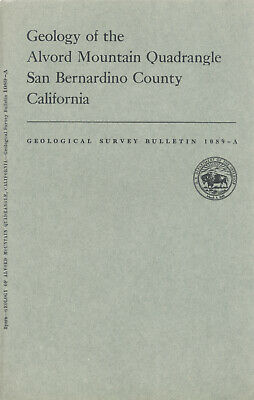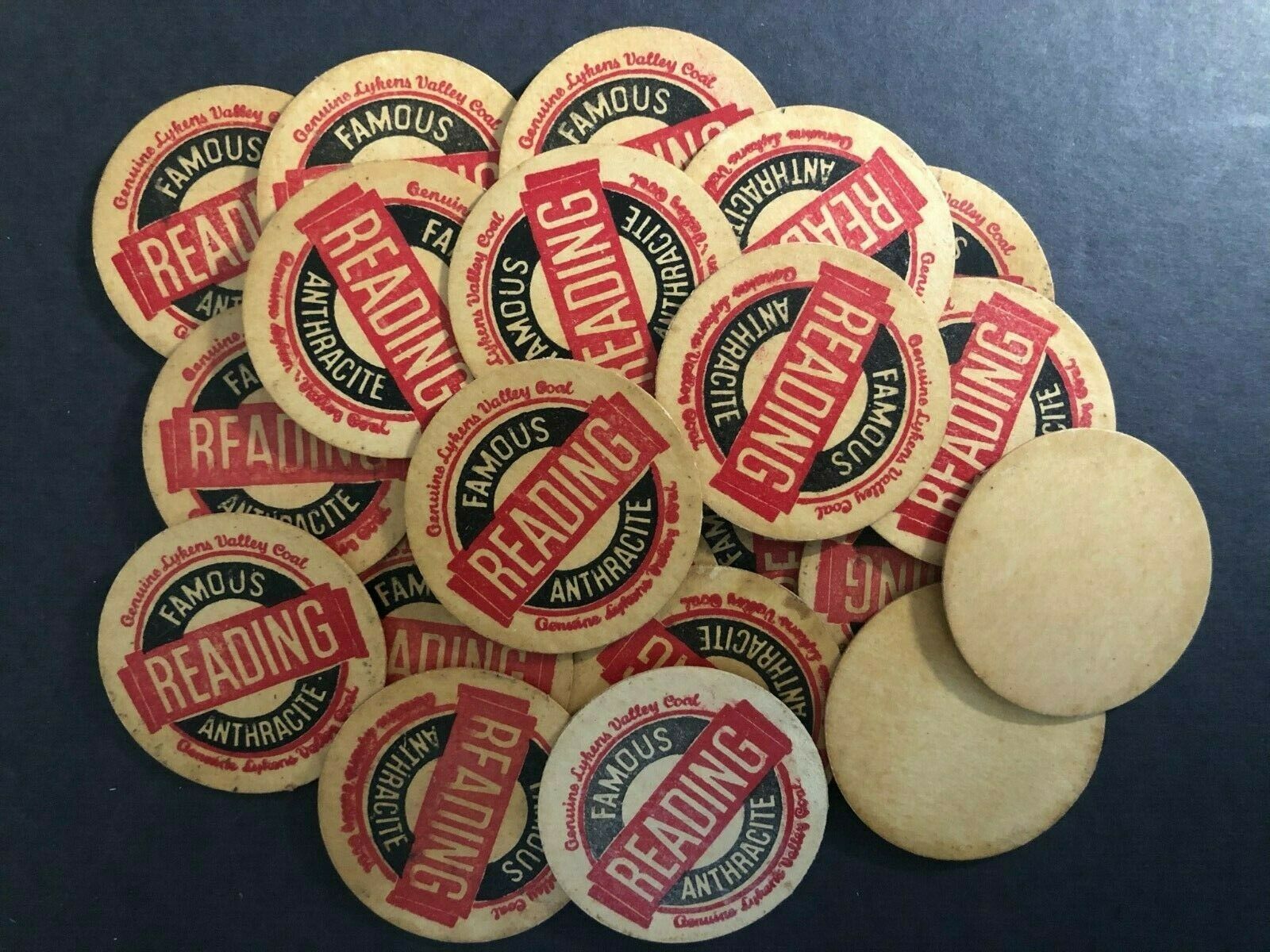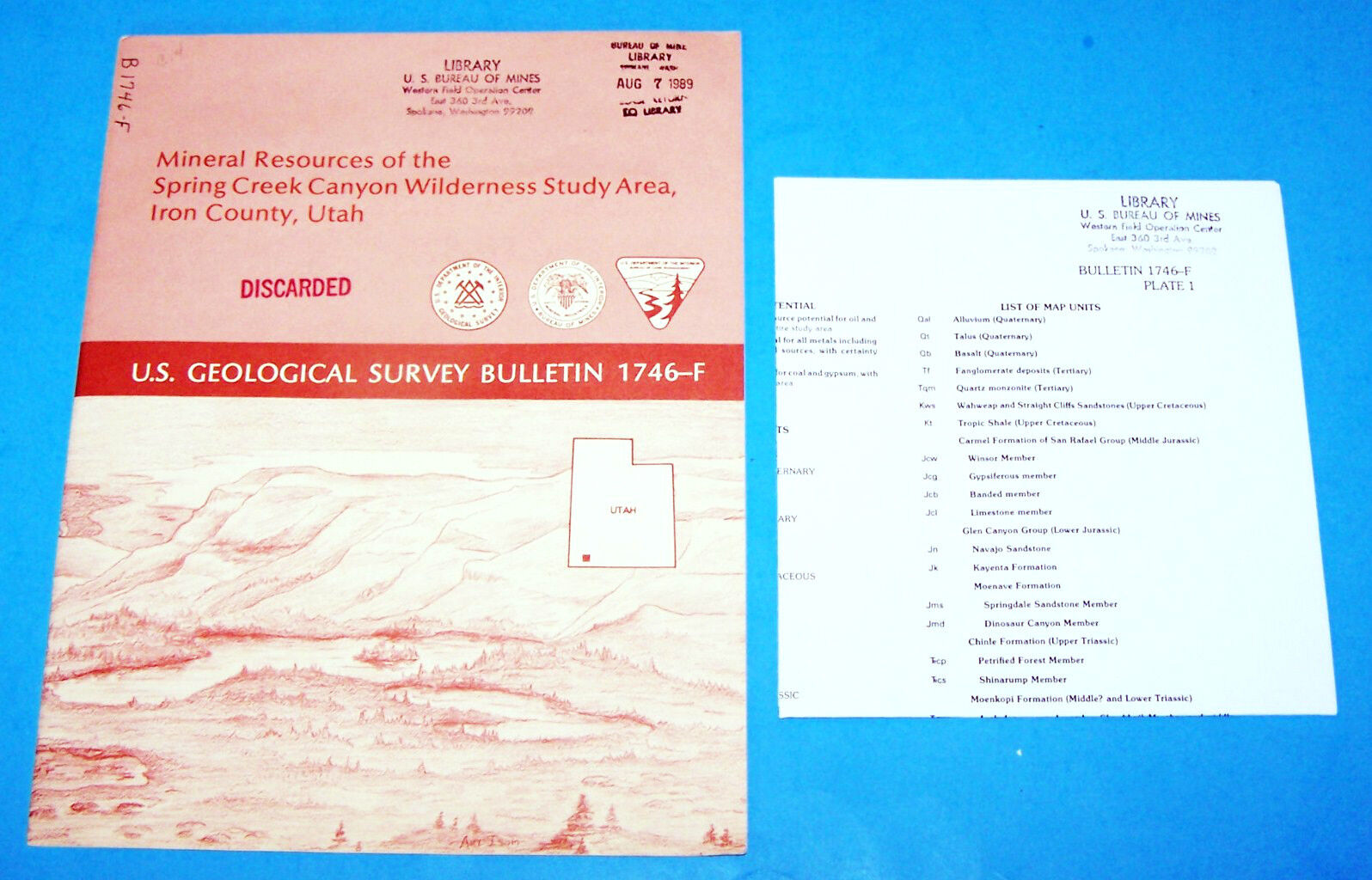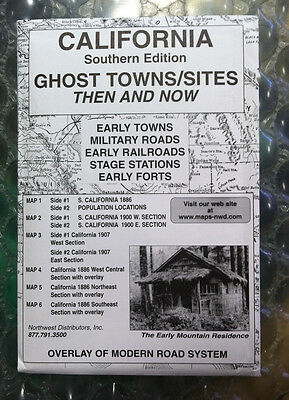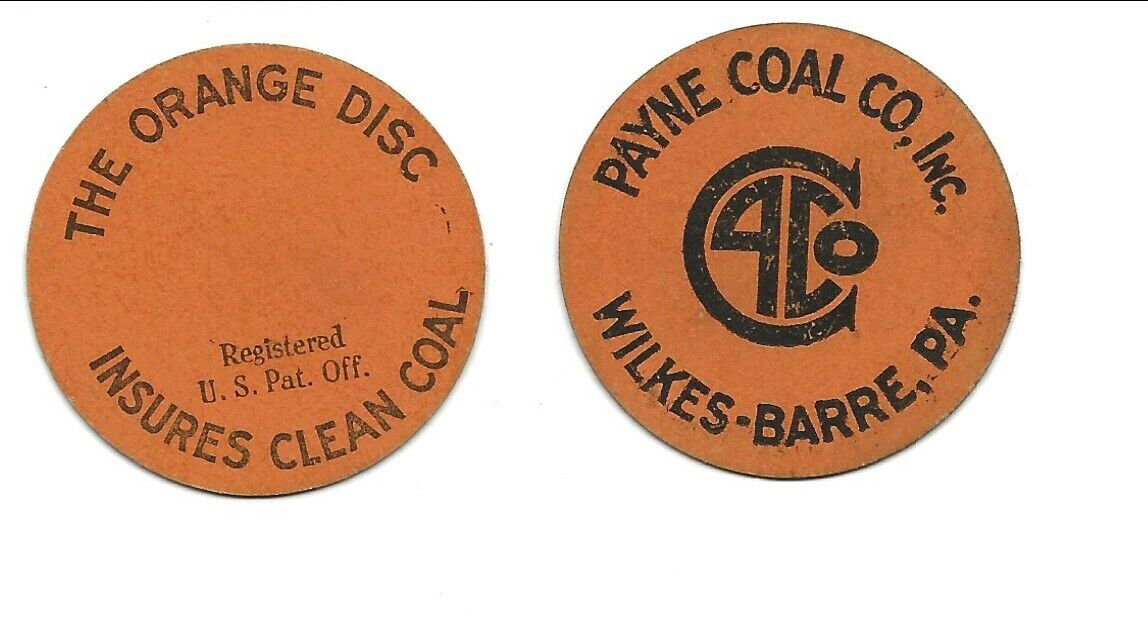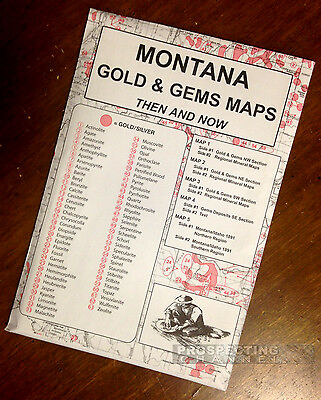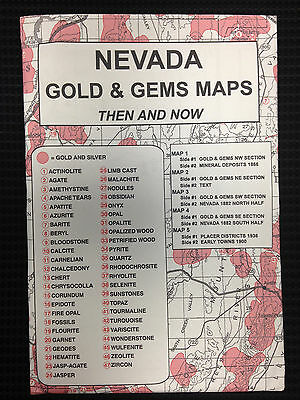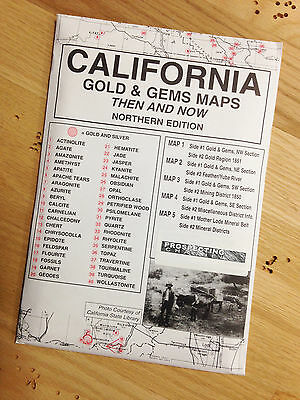-40%
Lost Alvord gold mine LOCATION REVEALED, Death Valley, Barstow, Calif, RARE old
$ 31.55
- Description
- Size Guide
Description
Scarce report describes and maps legendary lostmine, named for Alvord, early Death Valley explorer
Some think this is Alvord's famous lost mine, near Barstow,
California, NOT in Death Valley as was originally thought
Report has been out of print for years; copy is in NICE condition
T
his scarce first-edition report describes the geology and mines of the Alvord Mountain quadrangle in California's Mojave Desert — including what may be the legendary Lost Alvord mine.
Tiny detail from large color map from pocket shows mine shafts (squares half filled with black) and prospects (marked with an "X") near Alvord Mountain. Area mines produced gold, tungsten and limestone.
This 53-year-old report is considered primary source material; much of this info is available
nowhere else
.
It is a first edition, in near-perfect condition, totally out of print, with no official reprints available. The report includes two large separate maps, one in eye-popping color. We haven't found one of these to list in three years. So buy it now or forever hold your peace. Once it's gone, it's gone.
The Alvord mine in this report was named in 1881 by a prospector who felt certain that he had found Alvord's famous lost mine — not in Death Valley where many thought it was. He found it 30 miles east of Barstow, in a remote section of Mojave Desert, in San Bernardino County, California.
We have many MANY more rare mining books! Just visit our ebay store, Rare Mining Books:
http://stores.ebay.com/Rare-Mining-Books?_rdc=1
Mine is the stuff of legends
Alvord's lost mine is the stuff of Old West legends. Alvord discovered the incredibly rich mine, but when he returned to mine it, he couldn't find it again. Alvord's lost mine ranks right up there with Death Valley's other legendary lost mines — the Lost Gunsight, the Lost Goler and Breyfogle's Lost Mine, according to historian Richard Lingenfelter in his seminal book about the history of the Death Valley area.
1
Report covers large area
The report (which includes descriptions of gold and tungsten prospects other than the Alvord mine) covers an area about halfway between Barstow and Baker, in San Bernardino County, just north of Interstate 15, on the way to Las Vegas. The area includes Spanish Canyon, Alvord Mountain, part of Coyote Dry Lake, Langford Well and Langford Well Dry Lake.
To see just how much real estate this 1960 report covers, see the map below. Interestingly, this area is shown in some detail on the Auto Club of Southern California San Bernardino County road map, so that road map can be used to correlate exact mileages to roads on the color map with this report.
Detail of map from book shows location of Alvord Mountain quadrangle.
Area is open to mineral collecting and prospecting
It looks from the big separate map that comes with this report that about half of the quadrangle is in the Fort Irwin Military Reservation (1960 data). But the rest (including the Lost Alvord mine) appears to be on Bureau of Land Management land, and open to mineral collecting and prospecting, subject to the usual BLM rules. Because it is south of Death Valley National Park, strict national park rules against collecting do not apply.
Geology of the Alvord Mountain Quadrangle, San Bernardino, California
(cover at right) is not some gift-shop rockhound book; it was prepared by the U.S. Geological Survey 53 years ago. The 71-page report contains information of value to history buffs, bottle collectors, photographers, rockhounds, prospectors, geologists, offroaders, hikers, metal-detector users — just about anyone interested in the Mojave Desert's (and Death Valley's) geology and historic old mine sites.
Mines and prospects covered include the:
Previously discussed Alvord gold lode
(see photo below left), on the southern side of Alvord Mountain. Discovered in 1885, the mine includes a 440-foot tunnel and other workings. Up until 1952, a six stamp mill on site was used to process ore.
Starfire group
of tungsten claims, located in 1953 by George Cleminson, D. M. Clark, Kenneth Wilhelms and William Keon; Clark and Wilhelms are residents on the nearby tiny town of Mannix (1960 data).
Some tungsten ores are highly prized by rockhounds because they fluoresce brilliantly under ultraviolet light.
Various limestone deposits
.
Detail of small photo from book shows Alvord mine as it appeared in 1960 and the rock units surrounding it.
Area's unusual geology and fossils detailed
Since this is a geology report after all, it obviously details the area's unusual geology. The rocks of the Alvord Mountain quadrangle consist of a pre-Tertiary basement complex of
metamorphic and igneous rocks overlain by nonmarine sedimentary and volcanic rocks of Tertiary and Quaternary age.
Merychippus tehhachapiensis
, a middle Miocene horse, has been found 400 to 500 feet above the base of the Barstow formation, which is the upper 1,250 feet of the Tertiary system. Middle Miocene vertebrate remains were also found in the the middle tuffaceous member, composed of sandstone and tuff. The mineral resources of the quadrangle are chiefly gold and limestone. The tungsten mineral scheelite was found in 1953 in a tactite deposit in the northwestern part of Alvord mountain.
Find what others have missed
But who knows if all the mineral deposits have been found. The BIG separate map is just the thing if you want to prospect or collect at virgin, undiscovered locations instead of ones already known. It can help find new mineral deposits by showing geologic attributes conducive to forming the minerals that you're seeking. The book is a great help in that regard too. It was written about mines for miners by miners. Who knows, maybe you'll discover a part of the rich Lost Alvord that others have missed.
1
Some of the other historical background in this ad about the Lost Alvord Mine came from Richard Lingenfelter's
Death Valley and the Amargosa, A Land of Illusion,
first paperback edition, pp. 69–73
.
The report:
Geology of the Alvord Mountain Quadrangle, San Bernardino, California
, Geological Survey Bulletin 1089-A, first edition, first and only official printing, very nice condition, best one I've seen; 1960, by F. M. Byers Jr., US Government Printing Office, Washington, D.C., 71 pages, six by nine inches, stapled binding, stiff paper covers. Interior pages, cover and maps are in near-perfect condition, like the report was never opened before I got it. Two oversize maps (one in full color) in rear pocket are folded with some slight rippling.
As always, I am
extremely
conservative about rating book condition and very detailed in listing
any potential flaw, no matter how slight. You get what you pay for. If you want a trashed book — filled with scribbled notes, dog-eared pages and underlined passages that the seller just "somehow forgot" to tell you about in his ad — then look elsewhere on ebay.
Payment and domestic shipping
Paypal only. Shipping via priority mail is free in the U.S.. I pride myself on bulletproof packaging.
The fine print:
Feel free to contact me if you have any questions about the item or terms of sale. I post feedback once a week. Not responsible for typographical errors.
Good luck and thanks for looking!
Find new locales for minerals with the
Geologic map of and sections of Alvord Mountain quadrangle
(only portion of large map from pocket is shown here).
I want a report on this
or that quad TODAY!
No matter what old out-of-print U.S. mining book you are looking for, chances are that we probably have it OR can get it for you. Just ask. If we don't have it in stock, we are constantly in contact with a worldwide network of vendors and collectors ... If we can't find it for you, it doesn't exist!
Where is it?
The area covered by this report is in San Bernardino County, which is located in southeastern California. The county borders Nevada and Arizona. Adjacent counties are Riverside, Orange, Los Angeles, Kern and Inyo. Nearby counties include Mono, Fresno, Tulare, Kings, San Luis Obispo, Santa Barbara, Ventura, San Diego and Imperial.
Other San Bernardino County cities and towns (besides the ones previously mentioned in this ad) include: Adelanto, Alta Loma, Apple Valley, Barstow, Big Bear Lake, Bloomington, Chino, Cima, Colton, Cucamonga, Essex, Etiwanda, Fontana, Forest Falls, George Air Force Base, Grand Terrace, Havasu Landing, Helendale, Hesperia, Highland, Hinkley, Lake Arrowhead, Loma Linda, Lucerne Valley, Mentone, Montclair, Morongo Valley, Mountain Pass, Mt. Baldy, Needles, Ontario, Oro Grande, Parker Dam, Phelan, Pinon Hills, Pomona, Rancho Cucamonga, Redlands, Rialto, Upland, Yermo, and Yucca Valley.
Most of Death Valley is in Inyo County, California.
Towns, population areas and interesting sites in or near Inyo County include Aberdeen, the Alabama Hills, Ancient Bristlecone Pine Forest, Argus, Badwater, Ballarat, Big Pine, Bishop, Bullfrog, Cartago, Cerro Gordo, China Lake Naval Weapons Center, Cottonwood Lakes, Coso Junction, Darwin, Death Valley Junction, Dolomite, Dunmovin, Eureka Sand Dunes, Fossil Falls, Furnace Creek, Greenwater, Haiwee Reservoir, Independence, Inyokern, Keeler, Laws, Lake Sabrina, Little Lake, Lone Pine, Mt. Whitney, Olancha, Owens Lake, Onion Valley, Panamint Springs, Pearsonville, petroglyphs, Rhyolite, Saline Valley, Scotty's Castle, Shoshone, Sierras, Sierra Nevada, Stovepipe Wells, Swansea, Trona geology mining mines stock certificate, Tecopa, Ubehebe Crater, Whitney Portal.
